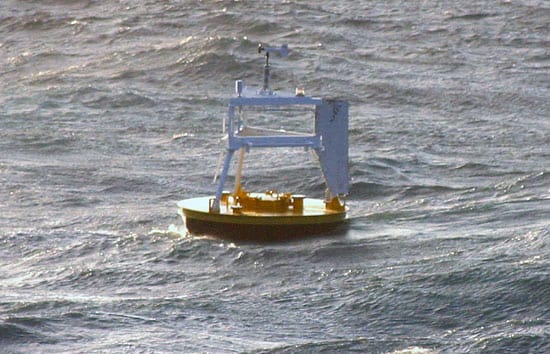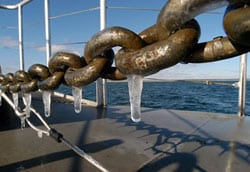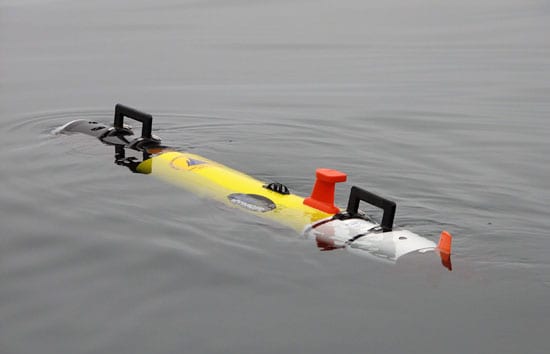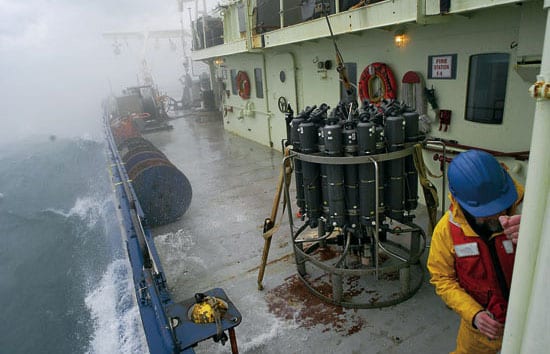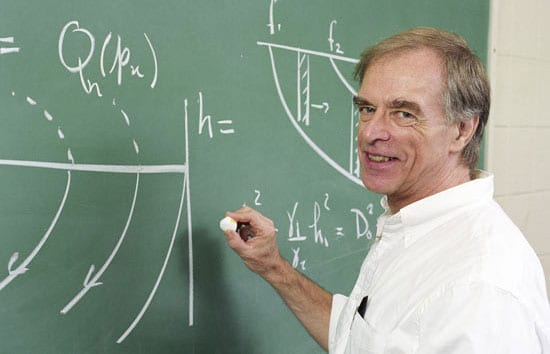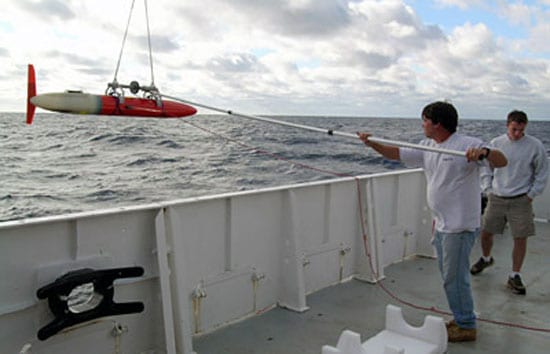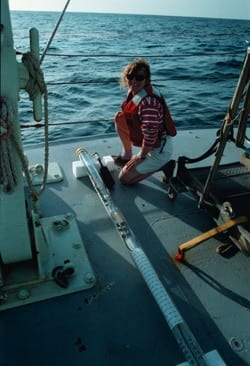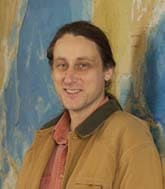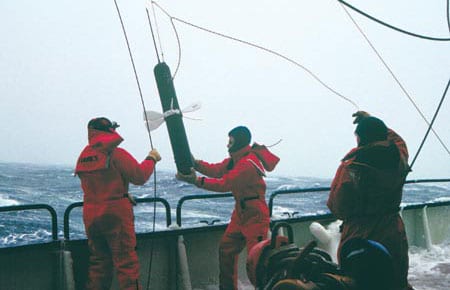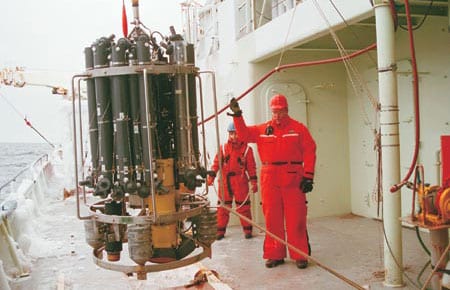Physical Oceanography
A Mooring Built to Survive the Irminger Sea
The 330-foot Royal Research Ship James Clark Ross heaved in 20-foot seas southeast of Greenland. Chief Scientist Bob Pickart and I were aft on the main deck, observing our recently…
Read MoreFour WHOI Researchers Recognized for Contributions to Science and Engineering
Four researchers have been recognized by the Woods Hole Oceanographic Institution (WHOI) for their contributions to ocean sciences research and engineering. All will receive funding provided by the endowed awards…
Read MoreChilly Scenes of Winter off Cape Cod
When winter winds began rattling the storm windows last autumn, Andrey Shcherbina and Glen Gawarkiewicz shook the mothballs out of their cold-weather exposure suits and dusted off their sea boots.…
Read MoreFloat 312, Where Are You?
The ocean is so enormous, even a fleet of 2,338 ocean-monitoring instruments can sail into it and go largely unnoticed. That’s what floats 312 and 393 were doing until something…
Read MoreUnder-ice Floats Offer a ‘Breakthrough’
The Arctic Ocean, home to fierce winds, punishing temperatures, and thick sea ice, is no place for wimpy people?or machines. So when WHOI physical oceanographers Peter Winsor and Breck Owens set out to explore the largely unknown currents beneath the polar sea ice, they had to design an instrument with true grit. (Fifth in a five-part series.)
Read MoreFlying Blind in the Ice Factory
Al Plueddemann wants to push the envelope and fly a robotic vehicle into the wild blue under the polar ice cap. North of Alaska lies a key region for understanding…
Read MoreIs Global Warming Changing the Arctic?
In the Arctic, the air, sea ice, and underlying ocean all interact in a delicately balanced system. Four ambitious Arctic projects are pulling back the icy veil that shrouds our understanding of the Arctic Ocean?s role in our climate system. (First of a five-part series.)
Read MoreWhere Currents Collide
In January 2005, a research cruise set out aboard R/V Oceanus for the tumultuous witnertime waters off Cape Hatteras—aptly nicknamed “the graveyard of the Atlantic.” During three weeks riding the waves, WHOI Research Associate Chris Linder kept a journal with pen and camera that includes “relentless North Atlantic storms battering our ship, instrument retrievals in the dead of night with blue water washing over the rail, and science gear shattered by 20-foot waves.”
Read MoreFathoming the Ocean Without Ever Going to Sea
“The general circulation of the ocean is a massive and majestic phenomenon,” says WHOI physical oceanographer Joe Pedlosky. In 2005, Pedlosky was awarded the prestigious Sverdrup Gold Medal of the American Meteorological Society for his theories explaining the inner workings of the ocean and the atmosphere. Not bad for an oceanographer who has never gone on a research cruise.
Read MoreA Glide Across the Gulf Stream
News of the first successful Gulf Stream crossing by a glider last November—and the launching today (Thursday, March 24) of Spray’s seven-week round-trip mission from Bermuda across the Gulf Stream and back—has caused a ripple among scientists, who recall the dream of famed WHOI oceanographer Henry Stommel.
Read MoreWHOI Scientist to Receive American Meteorological Society Award
A physical oceanographer known for his theories of wind driven ocean circulation and the fluid dynamics of the oceans will receive the 2005 Sverdrup Gold Medal from the American Meteorological Society (AMS), the nation’s leading professional society for scientists in the atmospheric and related sciences, in ceremonies January 12 at the AMS annual meeting in San Diego.
Read MoreFive WHOI Researchers Recognized for Contributions to Science and Education
Five researchers have been recognized by the Woods Hole Oceanographic Institution (WHOI) for their contributions to ocean sciences research and education. All will receive funding provided by the endowed awards…
Read MoreWHOI Scientist Honored As Blind Employee of the Year in Massachusetts
Dr. Amy Bower of the Woods Hole Oceanographic Institution (WHOI) will be honored today with the Thomas J. Carroll Award for Employment as Blind Employee of the Year in Massachusetts by The Carroll Center for the Blind in Newton, MA.
Read MoreWHOI Scientist To Receive Nansen Medal from European Geophysical Society
Kurt Polzin, an associate scientist in the Department of Physical Oceanography at Woods Hole Oceanographic Institution, will receive the European Geophysical Society’s Fridtjof Nansen Medal in recognition of his pioneering contributions to the measurement of mixing in the deep ocean. The award will be presented at the group’s annual meeting in Nice, France, in early April.
Read MoreWHOI Scientist Honored by American Meteorological Society
Robert A. Weller of the Woods Hole Oceanographic Institution has been honored by the American Meteorological Society (AMS) for his contributions to understanding the interactions between the oceans and atmosphere.
Read MoreTwo WHOI Scientists Honored by Office of Naval Research
Assistant Scientists Christopher Reddy and Steven Jayne of the Woods Hole Oceanographic Institution (WHOI) have been honored as 2003 Young Investigators by the Office of Naval Research (ONR).
Read MoreWHOI Scientist to be Honored January 16 by the American Meteorological Society
Nelson Hogg, a senior scientist at the Woods Hole Oceanographic Institution (WHOI), will receive the 2002 Stommel Award from the American Meteorological Society (AMS) January 16 during the society’s 82nd annual meeting in Orlando, FL. AMS is the nation’s leading professional society for scientists in the atmospheric and related sciences.
Read MoreTwo WHOI Scientists Recognized with Endowed Positions
Two scientists have been recognized by the Woods Hole Oceanographic Institution (WHOI) for their contributions to ocean sciences research. Drs. Daniel J. Fornari of the Geology and Geophysics Department and Rui Xin Huang of the Physical Oceanography Department have been named recipients of a W. Van Alan Clark Chair for Excellence in Oceanography at the Institution. Each endowed chair brings financial support for a period of five years, allowing the recipient the freedom to pursue a variety of career interests. The awards were announced today during the Institution’s fall meeting of the Board of Trustees and Members of the Corporation and are effective January 1, 2002.
Read MoreOutposts in the Ocean
Oceanographers and climatologists have something in common with politicians and stock market analysts: They are all trying to get a grasp on a complex, ever-shifting system.
Read MoreLaunching the Argo Armada
The Argo program proposes to disperse 3,000 floats, like the one below, throughout the oceans to collect data on oceanic conditions that can be periodically transmitted to shore via satellite.
Read MoreU.S. Navy Honors Two WHOI Scientists
The Office of Naval Research (ONR) has named Senior Scientist Robert A. Weller and Associate Scientist Steven P. Anderson of the Woods Hole Oceanographic Institution (WHOI) as recipients of its…
Read MoreMonsoon Winds and Carbon Cycles in the Arabian Sea
The monsoon, a giant sea breeze between the Asian massif and the Indian Ocean, is one of the most significant natural phenomena that influences the everyday life of more than 60 percent of the world’s population.
Read MoreA New Way to Catch the Rain
The carbon budget of the upper ocean includes an important loss to the deep ocean due to a very slowly falling rain of organic particles, usually called sediment. As this sediment falls through the upper water column it is consumed, mainly by bacteria, and the carbon is recycled into nonsinking forms (dissolved or colloidal organic carbon or inorganic forms). Thus the sediment rain decreases with increasing depth in the water column, and only a tiny fraction reaches the deep sea floor, less than about one percent.
Read MoreAdventure in the Labrador Sea
The sound of the general alarm bell reverberated through the ship. At 2:30 AM, this couldn’t be a drill. Even more puzzling, we were still dockside in Halifax, four hours from our scheduled departure for the Labrador Sea.
Read More
